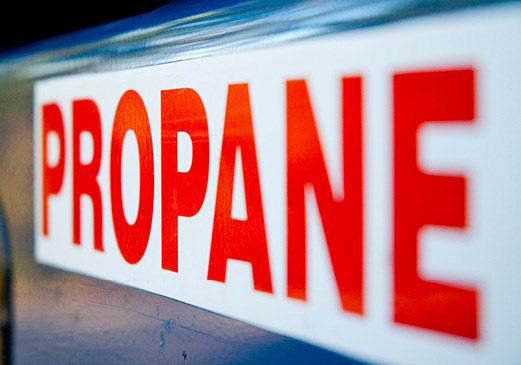Butane vs Propane vs Methane: What’s the Difference?
AUTHOR: Ferrellgas
At Ferrellgas, we know propane inside and out. With over 85 years of experience, we’ve earned the trust of customers nationwide by delivering reliable, cost-effective propane solutions. We’re not just about providing propane; we’re committed to helping you understand your energy options. While propane is our specialty, gases like butane and methane serve distinct energy needs. Let’s explore the key differences between propane, butane, and methane, and how each can meet your unique energy needs with the same dependable service Ferrellgas customers have trusted for decades.

What Are the Key Properties of Propane?
Propane is a hydrocarbon gas. Its chemical formula is C3H8, which means it has three carbon atoms and eight hydrogen atoms. Propane is stored as a liquid in pressurized containers, and it’s used for heating homes, running appliances, grilling food, and even powering vehicles.
What Elements Make Up Butane?
Butane is another hydrocarbon gas. It’s slightly heavier than propane, with four carbon atoms and ten hydrogen atoms (C4H10). You’ll find butane in lighters, torches, and some fuel mixtures.
| Fun fact: Some may know that Ferrellgas’ humble roots began in the late 1930s in the small Missouri River town of Atchison, Kansas. We were founded and known for many years as A.C. Ferrell Butane Gas Company. It’s been many years since we sold butane gas, but we’re more than comfortable telling you a thing or two about butane. |
What is Methane?
Methane is the lightest hydrocarbon, with just one carbon atom and four hydrogen atoms (CH4). It’s the primary component in natural gas and a key fuel for heating homes, running ovens, and powering water heaters.
What Are the Differentiating Factors Between Propane and Butane?
Ferrellgas often receives questions about various hydrocarbon mixtures, including which uses may be interchangeable. Take propane and butane, for example. Propane and butane are both clean, safe, and environmentally friendly fuels that produce less pollution than oil, gasoline, or diesel. But they’re not exactly the same — here are some key differences:
Boiling Point
-
Propane boils at -43.6°F, which means it turns to gas even in extremely cold weather. That’s why it’s great for outdoor storage and cold climates.
-
Butane boils at 30.2°F, so it doesn’t work well when temperatures drop below freezing.
Cost
-
A study conducted by Newport Partners, LLC, analyzed various residential heating systems across different U.S. climate zones. The findings revealed that in cold climates, high-efficiency propane furnaces had annual energy costs of approximately $1,650. Costs were nearly 10% lower than those of standard-efficiency air source heat pumps and about 14% lower than heating oil furnaces. The study also noted that propane furnaces consistently deliver air at temperatures of 115 degrees Fahrenheit or higher, providing greater comfort in cold climates compared to other systems that supply cooler air.
Storage
-
Both gases are stored as liquids in pressurized containers.
-
Propane tanks come in many sizes and are suitable for both short-term and long-term outdoor storage, even in freezing weather.
-
Butane is stored in small canisters, which makes it a great option for portable use like lighters and small torches.
Carbon Emissions
-
According to the Environmental Protection Agency, butane releases more CO2 per unit of energy than propane due to its higher carbon content.
Want to Know More About Powering Your Home with Propane?
Propane is a clean, reliable, and versatile fuel that you can count on for all your energy needs. Whether you're switching to propane or looking for a trusted supplier, Ferrellgas is here to help. Contact us today to learn more about our services and find the right propane solution for your home.
Sources
Propane vs Butane: What’s the Difference?, National Council on Energy
The Difference Between Butane and Propane, Men’s Journal
What Gas Is Right for Your BBQ?, Direct Stoves
CATEGORIES
Archives
- Winter 2025
- Fall 2025
- Summer 2025
- Spring 2025
- Winter 2024
- Fall 2024
- Summer 2024
- Spring 2024
- Winter 2023
- Fall 2023
- Summer 2023
- Spring 2023
- Winter 2022
- Fall 2022
- Summer 2022
- Spring 2022
- Winter 2021
- Fall 2021
- Summer 2021
- Spring 2021
- Winter 2020
- Fall 2020
- Summer 2020
- Spring 2020
- Winter 2019
- Fall 2019
- Summer 2019
- Spring 2019
- Winter 2018
- Fall 2018
- Summer 2018
- Spring 2018
- Winter 2017
